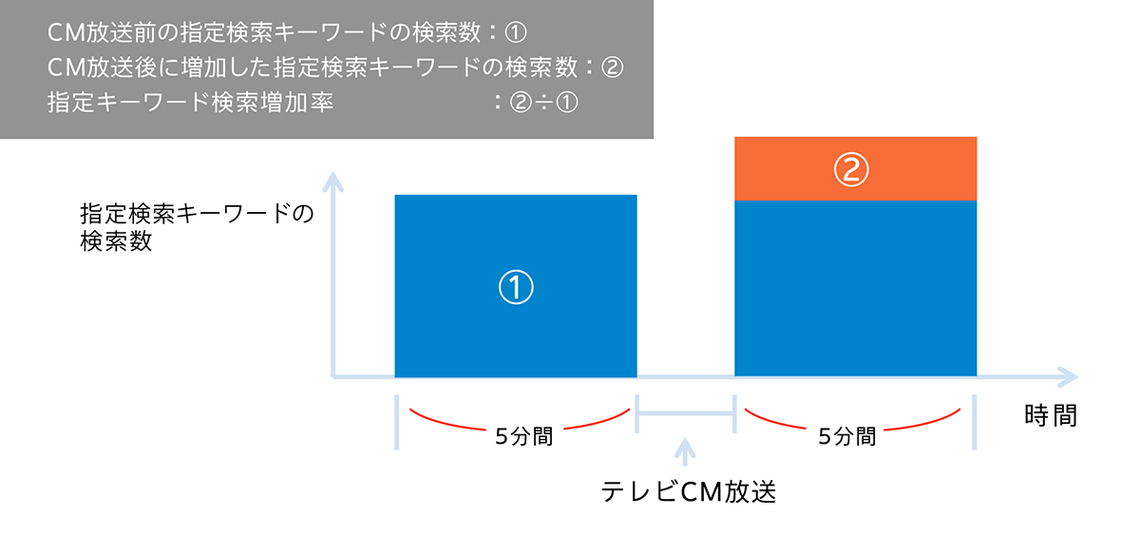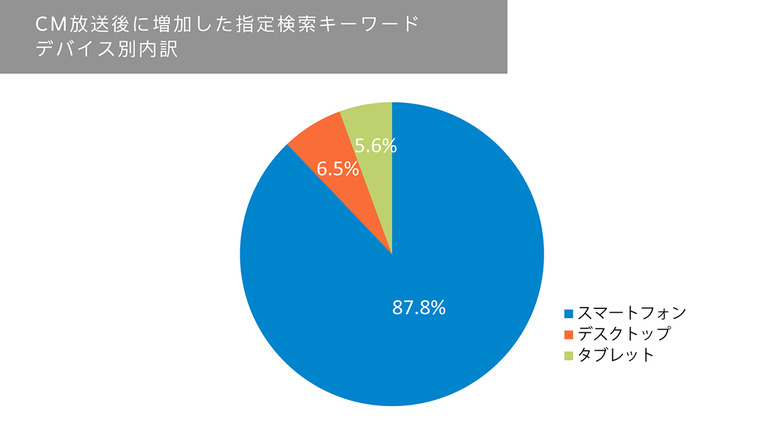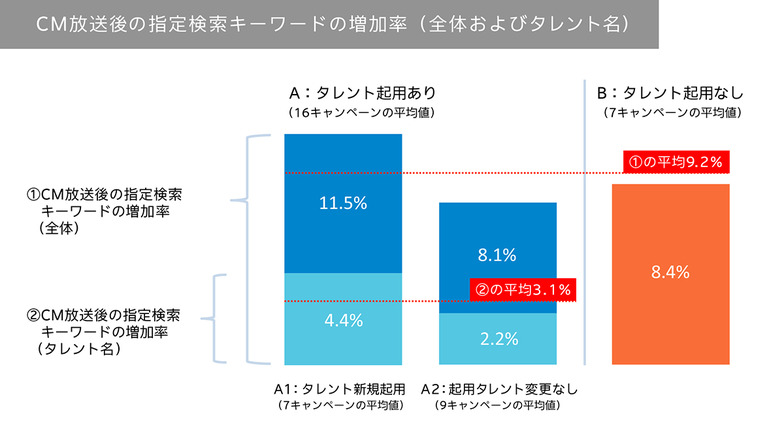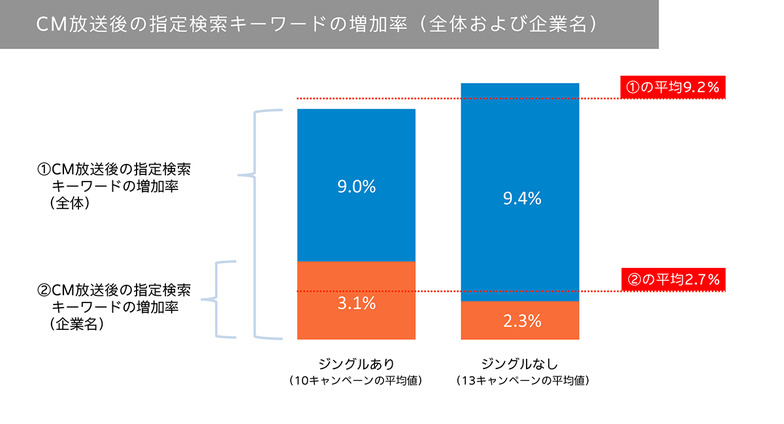Note: This website was automatically translated, so some terms or nuances may not be completely accurate.
[We Investigated] Are TVs and Smartphones Really That Compatible?

Arakawa Taku
What Makes an Effective TV Commercial in the Smartphone Era?
For those involved in marketing, TV commercials and search may seem like an old topic. Attempts to link TV commercials to search behavior have been ongoing for over a decade.
This time, Dentsu Inc., in collaboration with Google, conducted a quantitative study using search data to measure the impact TV commercials have on search behavior. We examined not just the simple correlation between ad volume and search volume, but the specific impact of each aired commercial, verified through search data.
This article introduces the overview of that study and explores what kind of TV commercials are effective, particularly when considering smartphone-focused strategies that have become increasingly important in recent years.
Research Method
The survey targeted 23 TV commercial campaigns for 5 products aired over a six-month period from December 2014 to May 2015. The products included beverages, automobiles, cosmetics, travel agencies, and smartphone apps.
The specific data used in the survey included TV commercial airing data (spots and times in Tokyo, Osaka, and Nagoya) and Google search data (including smartphones and tablets).
The survey first used the former data to pinpoint every minute the TV commercials aired. It then used the latter data to compare the five minutes before and after each commercial aired, verifying how much the number of searches for specified keywords increased on Google. This time, the keywords included industry names, company names, product names, names of featured celebrities (including characters), and other advertising expressions related to the campaign brands.
To summarize, the research process is as follows:

Search volume increased by up to 20% after TV commercial airing
First, an overview of the findings: Averaging across all 23 campaigns, specified search keywords increased by 9.2% between before and after TV commercial airing (Figure ② above). Looking at individual campaigns, some saw increases exceeding 20%. The results showed greater variation between individual campaigns than across industries.
From here, we will focus our analysis primarily on two areas: ① search devices and ② keyword categories.
"See it on TV, search on your smartphone immediately"
One of the most interesting findings in this survey was the incremental search volume by device. On average, 87.8% of searches came from smartphones, 6.5% from desktops, and 5.6% from tablets, clearly showing smartphones accounted for the vast majority of the incremental searches.

It should be noted that limiting the timeframe of search behavior to just 5 minutes in this study tends to amplify the proportion of smartphone searches. Nevertheless, this result likely reflects characteristics of the current media environment. It is said that multi-screen viewing, where people watch TV while using mobile devices, is becoming widespread, especially among younger generations. This result also mirrors such viewing patterns.
Keeping in mind that TV commercials tend to drive smartphone searches afterward, it's effective to not only design smartphone-optimized sites but also prepare landing pages. This includes smartphone-targeted search-linked ads and utilizing deep links within search ads to direct users to related apps.
Should commercials feature celebrities?
Next, let's examine the results by search keyword. While direct comparisons are difficult due to varying campaign messages per work, we'll first categorize them into two types: A: Featuring celebrities, and B: Not featuring celebrities. Out of 23 campaigns, 16 fell into category A and 7 into category B. The percentage distribution of the search increase across the five search keyword categories outlined earlier is as follows. Note that these categories refer to instances where the keyword was searched individually. Searches combining multiple keywords fall under "Multiple Keywords."

For Campaign A, product names and celebrity names each accounted for over 30% of the search increase. For Campaign B, company names accounted for over half, followed by product names. In both cases, single keywords accounted for over 90% of the search increase. This indicates that searches combining multiple keywords were very rare among the search increases following TV commercial airings.
Does the presence or absence of talent casting fundamentally change the search increase? Here, we further analyzed A: Talent Casting Present into A1: New Talent Casting and A2: No Change in Casting Talent. Among the 16 campaigns, 7 corresponded to A1 and 9 to A2.

The overall increase in search keywords averaged 11.5% for campaigns featuring new talent and 8.1% for those without a change in talent, showing a difference. Campaigns without any talent saw an average increase of 8.4%, higher than those without a change in talent, but still lower than those featuring new talent. When new talent was featured, the share of talent names within search keywords notably increased, likely driving the overall search increase. This indicates that when a new talent is featured, searches increase using the talent's name as a hook. When introducing a new talent in a TV commercial, it would be effective to create web content beforehand linking the talent to the work, preparing pathways from search. Of course, on the other hand, featuring a talent relatively lowers the proportion of searches for other keywords like the company name or brand name. It is crucial to feature talents aligned with the campaign's objectives.
Jingle = The Face of the Company?
Finally, let's focus on corporate jingles (where the company logo and audio are displayed at the beginning or end of a commercial). Below is a graph comparing the 10 campaigns with company name jingles and the 13 campaigns without jingles, out of the 23 campaigns surveyed.

The average increase in company name searches before and after TV commercial airing was 2.7%. When a company jingle was present, the average increase rose to 3.1%, indicating higher search volumes compared to campaigns without a jingle. However, this study found that the overall keyword increase rate was higher for campaigns without a company jingle.
This clearly shows that emphasizing the company name (including logos or sound logos) within TV commercials can lead to an increase in company name searches. Considering corporate branding as well, incorporating a company jingle is advisable.
Summary
Regarding TV commercials with web initiatives in mind, the key findings from this study are summarized below.
① During TV commercial airing, preparations that capture search traffic, especially on smartphones, are particularly effective.
② For TV commercials featuring newly cast talent, prepare web content beforehand that links the talent to the work.
③ Corporate jingles can be expected to increase searches for the company name.
Moving forward, we believe more precise comparative analysis—aligning commercial airing times as closely as possible—and extending the pre- and post-broadcast timeframes for the study will enable analysis of cross-device search behavior and differences in purchasing behavior across industries.
Remo Storni, Google's Quantitative Marketing Manager who extracted the search data, commented as follows:
"This study confirmed that TV commercials trigger a 'I want to know more!' impulse about companies, talent, or products, with search behavior—particularly mobile searches—serving as the outlet for this interest, as evidenced by increased search keywords. Similar trends have been observed in other countries, and we find this encouraging for Google, which prioritizes mobile. We hope this data encourages companies that frequently use TV commercials to accelerate their mobile strategies."
Initiatives to drive searches through TV commercials represent an effort to connect AI (Attention/Interest) to SA (Search/Action) within the AISAS purchasing behavior process model. We believe combining mass advertising with smartphone-focused strategies enables more effective communication aligned with the purchasing process.
Was this article helpful?
Newsletter registration is here
We select and publish important news every day
For inquiries about this article
Author

Arakawa Taku
After joining Dentsu Inc., primarily worked in the communications and media sectors, handling data analysis, digital planning, and ad tech support including DMPs. Former editor. Left Dentsu Inc. in March 2023.